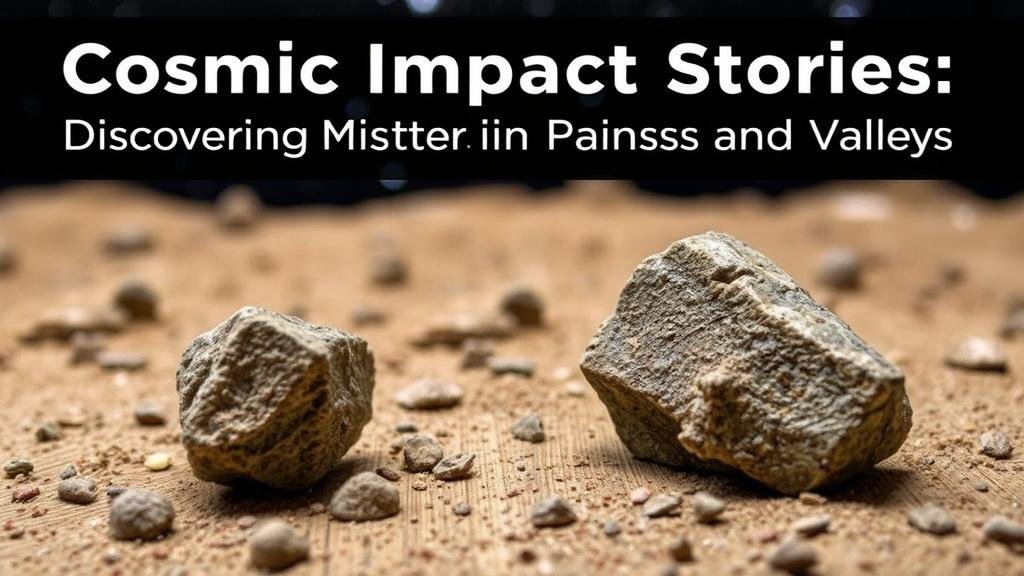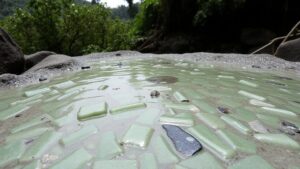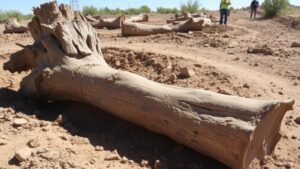Cosmic Impact Stories: Discovering Meteorites in Plains and Valleys
Cosmic Impact Stories: Discovering Meteorites in Plains and Valleys
Meteorites, remnants of cosmic debris ranging from small particles to large asteroids, offer a fascinating glimpse into the formation of our solar system. For rockhounds and mineral collectors, discovering these celestial rocks can be both an adventure and a rewarding pursuit. This article delves into the stories of meteorite discoveries in various plains and valleys, highlighting methods for identification, collection tips, and notable examples from different regions.
The Nature of Meteorites
Meteorites can be classified into three primary categories: stony meteorites (comprising the majority), iron meteorites, and stony-iron meteorites. Understanding these types is essential for collectors. Stony meteorites can be further divided into chondrites, which are the most common, and achondrites, which have undergone significant alteration.
- Stony Meteorites: These contain silicate minerals and are often from the primordial material of the solar system.
- Iron Meteorites: Composed mostly of iron and nickel, these meteorites are denser and often have a distinctive metallic sheen.
- Stony-Iron Meteorites: A unique combination of both stone and metal, these are rarer and highly sought after.
Why Plains and Valleys?
Plains and valleys often serve as prime locations for meteorite collection due to their relatively unobstructed views of the sky and historical impact events. Low-lying areas can preserve meteorites that have fallen, as sedimentation can cover and protect them from erosion. Also, weather patterns in these regions can aid in revealing new finds.
Notable Meteorite Discoveries
A variety of meteorites have been discovered across different plains and valleys, leading to rich stories of cosmic impact. Some well-documented discoveries include:
- The Campo del Cielo: This meteorite field in Argentina has yielded over 100 tons of iron meteorites dating back approximately 4,000 years. The largest mass weighs about 37 tons.
- The Willamette Meteorite: Found in Oregon, this is one of the largest meteorites ever discovered in North America, weighing in at around 15.5 tons. Willamette is an iron meteorite and is noted for its unique history and aesthetic etching.
- The Holsinger Meteorite: Discovered in central Virginia, this stony meteorite showcases the significance of small meteorite finds in less-expected locations.
Identification Techniques for Collectors
Identifying meteorites is crucial for collectors. Here are some practical techniques to ensure you have a true meteorite:
- Magnet Test: Many meteorites contain iron and can be attracted to a magnet. Using a simple fridge magnet can help in initial identification.
- Cut and Examine: A slice of the meteorite can reveal its internal structure, including chondrules in stony meteorites.
- Surface Features: Look for fusion crust– a shiny, dark exterior formed during atmospheric entry. This feature can help distinguish meteorites from terrestrial rocks.
Practical Tips for Meteorite Hunting
If youre considering exploring plains and valleys for meteorites, here are some actionable takeaways:
- Research Impact Events: Knowing the history of meteorite falls in your region increases your chances of finding a specimen.
- Join Local Rockhound Groups: Networking with local collectors can provide insights and access to prime hunting locations.
- Use Technology: Employ satellite imagery and apps that track meteorite falls to enhance your search.
- Follow Legal Guidelines: Always ensure that you have the necessary permissions to collect meteorites from public or private lands.
The Importance of Meteorite Preservation
Once discovered, the proper care and preservation of meteorites are essential. Improper handling can lead to degradation. Store meteorites in a climate-controlled environment, away from direct sunlight and humidity. Displaying them in showcases can help prevent physical damage while allowing you to appreciate their beauty and uniqueness.
Conclusion
Discovering meteorites in the plains and valleys is not just a hobby; it is a connection to the cosmos and our planets history. Whether you are a seasoned collector or a curious beginner, the thrill of finding and studying these celestial stones can be invigorating. With the right knowledge, tools, and respect for the land, you can embark on your own adventure into the world of cosmic impacts.



